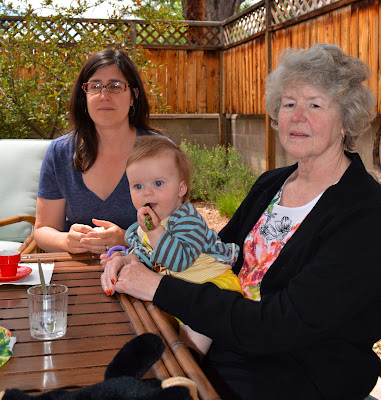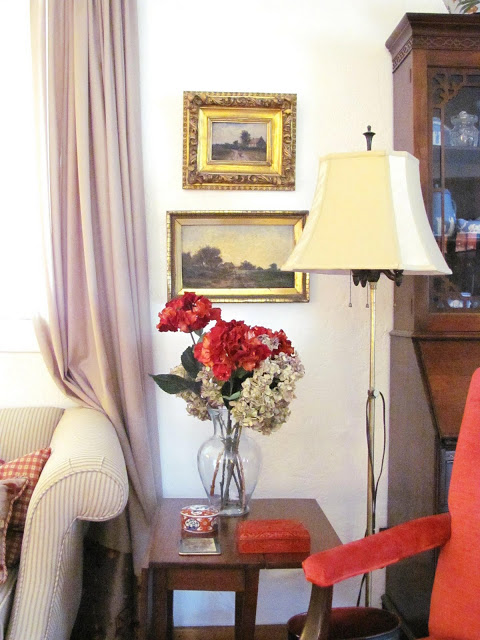Anastasia Stewart Odgen has a secret hidden in her desk. Not letters from a illicit lover, not jewelry, but a deed granting her ownership of a thousand acres of her father's estate in Maryland. Her husband, James, doesn't know about this gift from her father.
Anastasia keeps the deed locked in the bottom drawer of her desk along with the ownership papers of her three slaves. Her father, Lee, wanted Anastasia to have something of her own in case her marriage was unhappy. He was land rich, but cash poor. He had not been pleased at Anastasia's choice of a husband especially one who clearly harbored revolutionary views. However, at the age of 24, his headstrong daughter was running out of options in the marriage department.
Anastasia had frightened off several suitors when she clearly stated her desire to be in charge of her own life. James Ogden did not seem to think this was odd, perhaps because his own mother had been such an opinionated woman. And he did so admire Anastasia's beautiful red hair. So off Anastasia went to Virginia with her three personal slaves traveling with her. Lydia, the cook, would be sorely missed by Lee Stewart, but she had trained a replacement that seemed to be working out well. Of course, Lydia refused to go without her sister Sarai, and Sarai would not go without her son, Jed. Lee Stewart was very fond of Jed and extracted promises from Anastasia that Jed would never be sold out of the family.
The small party arrived in Virginia, weary and dirty from the four day carriage ride. Dismayed, they eyed the small town house that was James Ogden's home. Anastasia Stewart's girlhood home had a ballroom, six bedrooms, a music room and a library. The grounds were famous all over the Eastern shore. This house was right in the middle of a busy town across from a tavern and city hall!
Sitting at her desk, Ana (Jame's pet name for her...no one else is allowed to shorten her lovely name) remembers those days with a smile.
That first night with James gave her hope that this bargain she had made would turn out to be the best of all choices. James thought she was wonderful, a belief that Ana had long held herself and was astounded that so few people seemed to agree!
The next morning Ana had regained her high spirits. Exploring the modest house, she found a good sized attic stuffed full of old furniture, chests, broken tools, boxes of cast-off clothing, a printing press and signs that a racoon had been living in it. Lydia, with a shrug, agreed it might be better than the lean-to and set to work with Sarai and Jed to clean it out. Jed caught sight of the racoon and disappeared to find materials to make a trap.
James had been taking his meals at the tavern since his mother had died and had no idea where to purchase provisions for the kitchen. Sarai was sent to pick up the noon meal from the tavern while Lydia made a list and went in search of a store. Jed looked with horror at the overgrown garden and realized he was going to have to weed it because James kept no other house slaves. James, blithely unaware of the inadequacies of his welcome to his new bride went off to his fields to check on his plantation manager.
 |
| Ellen Ogden's household accounts |
After the noon meal, Anastasia sat at James' mother desk to discover that she had keep detailed accounts each year of the household and of the income from the plantation. There had been a great deal of money set aside over the years.
Feeling better, Anastasia began to plan a kitchen addition to the property.
Writing a letter to her father, Anastasia asked how much yearly income she might expect from her lands. Perhaps she could build the kitchen addition right away with a down payment from some of Ellen's savings and a payment the following year from her income. Thinking hard, she found a new accounts book and began her own figures.
Lydia had some wonderful ideas for the new kitchen addition and also spent several hours taking a inventory of the tiny kitchen to see what would need to be purchased immediately in order to feed this newly created family.
Realizing there was another drawer hidden by the drop leaf, Anastasia closed up the top of the desk to see what was inside the top drawer.
Ellen's tapestry threads form a rainbow of color. "Humph," thought Anastasia, those will never be used." "I have much more important things to do."
That evening, after Lydia's wonderful meal, Anastasia showed James the sketches she had made of the kitchen addition, and the ideas she had for paying for it. Reluctant to take anything from her father, he thought they could finance it themselves over a couple of years. Anastasia bit her tongue to keep from blurting out that it was her money, for James did not know about her land. Maybe they could make do for two years to save her husband's pride. In the meantime, she really must soften the front of the house with some plantings because of course Williamsburg society will flock to her door when they realize afternoon tea will be a sumptuous repast in Lydia's creative hands.
My sister Rosalind made the desk. As a gift for her, I made all the little accessories for it except for the scissors, the wax stamp (which is a chess piece from a miniature chess set in my Hogwarts castle), the compass, the owl beads I used for the bookends and the "feather pen" which is actually a metal charm. If you want to make needlepoint yarn skeins, you will need to use just two threads wrapped six times around your finger. Gather the loop together in the middle. Glue a label cut from scrapbook paper (or in this case, I used a printable book cover that had a nice design.) The inkwell is made from beads, and the wax stamp is made from Sculpey.
All that is lacking is a candle and candlestick on the desk....















































